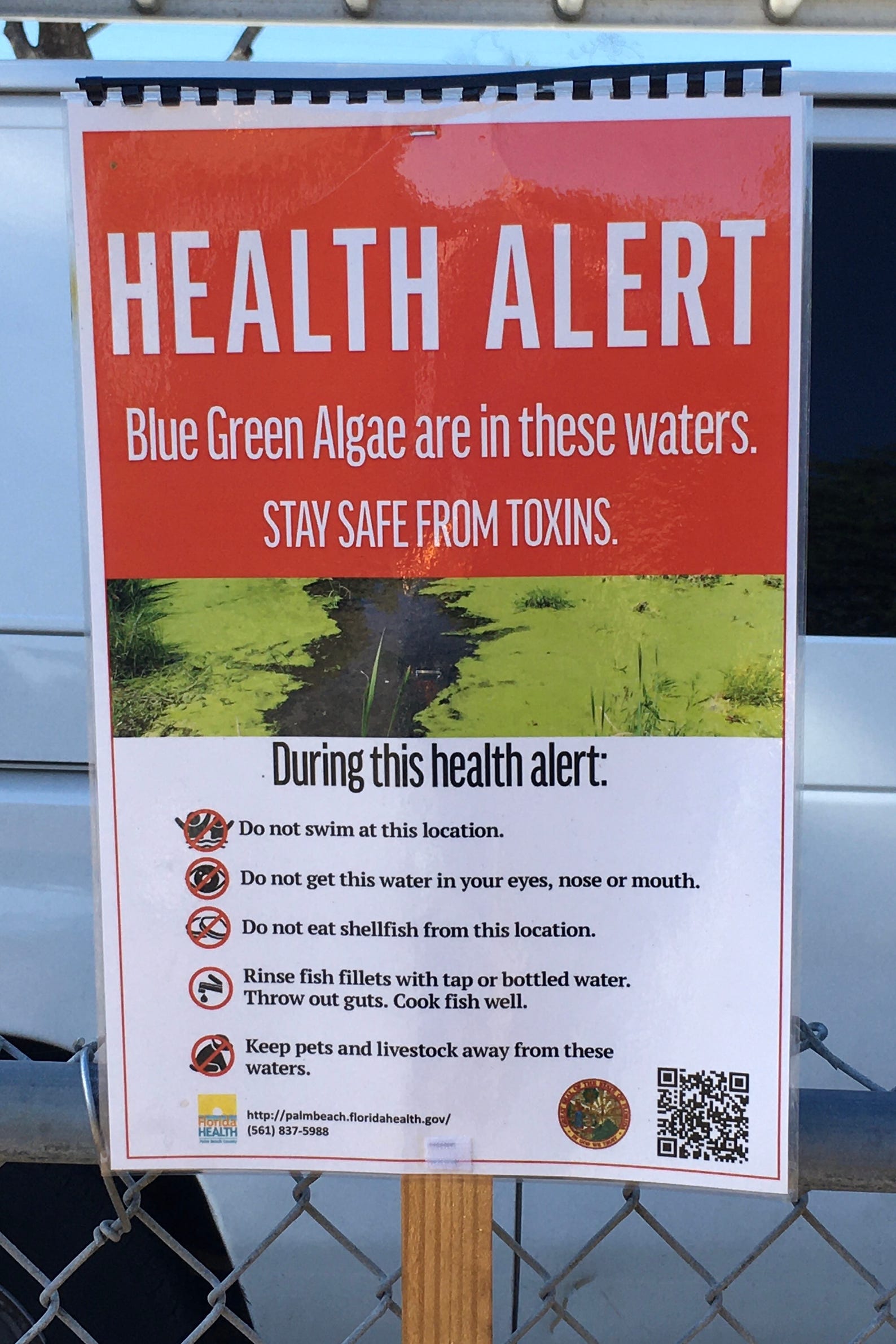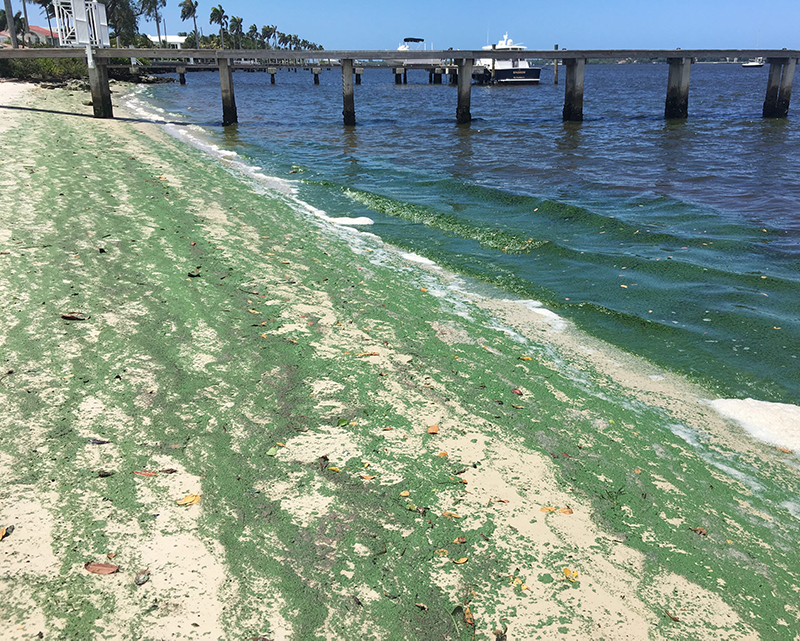Toxin-laced blue-green algae discharged into Lake Worth Lagoon, raising water concerns
A blue-green algae bloom was identified in water discharging to the Lake Worth Lagoon last month with toxin levels high enough to trigger the posting of multiple warning signs at Spillway Park, a popular fishing spot.
The lagoon is receiving a mix of water that includes discharges from Lake Okeechobee, according to the South Florida Water Management District. The Army Corps of Engineers said Friday it was halting those discharges because of lake-level concerns.
A freshwater infusion was requested by the county because salinity levels in the brackish estuary were getting as high as the ocean, but it asked that the delivery not include lake water that can carry the ingredients for a harmful blue-green algae bloom.
MORE: Why four nesting shorebirds had Palm Beach County officials jumping for joy
RELATED: Islands near at hand in the Lake Worth Lagoon
“Of course, that’s not what we ended up getting. We took Lake Okeechobee water and with that came a cyanobacteria bloom,” said Reinaldo Diaz, founder of Lake Worth Waterkeeper, a lagoon advocacy group.

(Signs posted last month at the spillway between Lake Worth and West Palm Beach warn of blue green algae that was found in water being discharged into the Lake Worth Lagoon. )
The level of toxins measured last month were trace amounts and below what the EPA considers unsafe, but Diaz is concerned dangerous toxin levels could follow as longer days and warmer temperatures encourage cyanobacteria growth.
“If I know there is ANY microcystin in the water, I stay away,” said Florida Atlantic University research professor J. William Louda in an email about the toxin measurement. “Exposure to even low levels, over time, can lead to health problems.”
Florida Department of Environmental Protection officials did not respond to a question about when the water at the spillway would be tested again.
The EPA says toxin levels over 8 parts per billion, or ppb, are unsafe. Tests of the water going into the lagoon that triggered the warning signs were under 1 ppb.
On March 29, similar toxin levels under 1 ppb were found in Lake Okeechobee water near the Port Mayaca Lock and Dam where lake water was being discharged into the St. Lucie estuary. That test triggered a health alert from Martin County. On April 5, U.S. Rep. Brian Mast, R-Palm City, asked in a letter with state Sen. Gayle Harrell, R-Stuart, and state Rep. Toby Overdorf, R-Palm City, that the Army Corps of Engineers end all releases from Lake Okeechobee to the St. Lucie estuary.
Trying to avoid another ‘lost summer’
“All of our constituents who have lived through a lost summer thanks to discharges from Lake Okeechobee can viscerally remember the look of guacamole thick algal blooms in our waterways and the scent of rotten eggs that accompanied the algae,” the lawmakers wrote.
The Army Corps of Engineers announced Friday it was ending releases to the St. Lucie and reducing releases to the Caloosahatchee after the lake dropped to 14.19 feet this week. That’s about a foot lower than a month ago and within a range the Corps is comfortable with as the rainy season begins May 15.
Col. Andrew Kelly, commander of the Corps’ Jacksonville District, said the lake level, not concerns over algae, was the reason releases were stopped.
Spongy chunks of algae clogged canals on the Caloosahatchee and St. Lucie estuaries in 2016 and 2018. The Lake Worth Lagoon also suffered a noticeable bloom in 2016 that temporarily closed Peanut Island near the July Fourth weekend.

(Green algae blankets Summa Beach Park in West Palm Beach on June 21, 2016.
HANDOUT)
The Corps releases water from Lake Okeechobee into the northern estuaries when lake levels get too high. While the Caloosahatchee and Lake Worth Lagoon require some freshwater to maintain their estuarine habitat, the St. Lucie is less needy.
This year, water managers struggled with too much water from a prolific and lengthy wet season that stressed the vegetation in treatment areas that take nutrients out of water before it goes into the Everglades.
Bloom can come and go
Diaz said the algae bloom is no longer visible at the spillway between Lake Worth and West Palm Beach.
“But if this was a mid-summer bloom and they sent that water it would have been noticeably worse,” he said.
Concerns about the lagoon’s health were raised again Thursday at the South Florida Water Management District’s governing board meeting.
Jeremy McBryan, Palm Beach County’s water resources manager, lamented during public comment that the Lake Worth Lagoon was not getting the same attention when it comes to the Comprehensive Everglades Restoration Plan. The plan, signed in 2000, had components removed or amended that would have helped the lagoon, McBryan said.
Everglades Law Center Executive Director Lisa Interlandi agreed.
“The Lake Worth Lagoon is one part of the system where there is not even any kind of water quality treatment being planned or discussed,” she said.
@Kmillerweather
